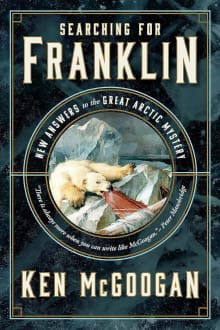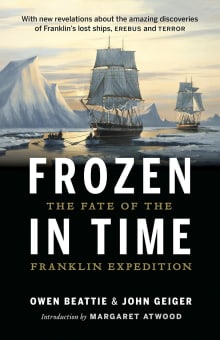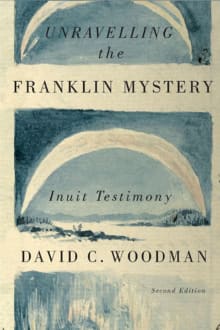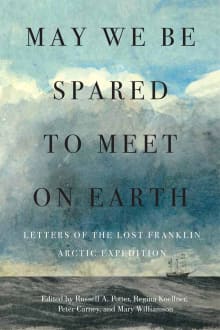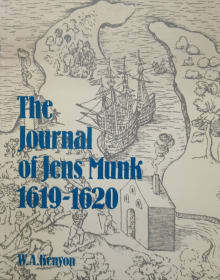Best books about what happened to Franklin

I did not set out to write six books about Arctic exploration. By the mid-1990s, while working full-time as a journalist, I had published three novels. I proposed to become a celebrated novelist. But then, during a three-month stint at the University of Cambridge, I discovered Arctic explorer John Rae–and that he had been denied his rightful recognition by Charles Dickens and other leading Victorians. I researched Rae’s story, marked his greatness in the Arctic, and celebrated him in Fatal Passage. It took me two decades and five more Arctic books — among them Lady Franklin’s Revenge and Dead Reckoning — to solve the great mystery while also publishing ten books on other subjects. Call me an obsessive scribbler.
The invitation arrived. Take your latest book, explain why you wrote it . . . and then pick five others, somehow related, that you would recommend. You can read the result either below or at The Best Books About What Happened to the Lost Franklin Expedition.
I wrote… Searching for Franklin: New Answers to the Great Arctic Mystery
Two Arctic expeditions led by Sir John Franklin ended in disaster, the last one culminating in 129 deaths, including his own. Yet many see the Royal Navy man as a hero who sacrificed his life to discover the Northwest Passage. In Searching for Franklin, I challenge that vision–reject old orthodoxies, interweave historical narratives, and incorporate recent research. I build on the five books cited below and on three of my own: Fatal Passage, Lady Franklin’s Revenge, and Dead Reckoning. Drawing also on archival research, personal experience, and Inuit oral history, I analyze Franklin’s hubris–his English superiority complex and evangelical Christianity. I argue that his final expedition fell victim to trichinosis, which resulted from eating infected polar bear meat. See Amazon or the independents.
The five books I picked & why
1. Frozen in Time: The Fate of the Franklin Expedition, by
This is the classic introduction to Franklin’s 1845 expedition. On Beechey Island, Owen Beattie conducted autopsies on the bodies of the first three sailors to die. John Geiger tells the story so clearly that he opens the door to interpretations at odds with his own.
At the northern tip of King William Island, believing he had no option, Franklin turned southwest into “the continuously replenished pack-ice.” He sailed into a lethal trap, one “made all the more cruel with the realization that the route along the eastern coast of the island regularly clears during the summer.” Here, I realized that Geiger was referencing the strait John Rae discovered in 1854, which, fifty years later, Roald Amundsen would vindicate as the final link in the first navigable Northwest Passage.
2. Portrait of Jane: A Life of Lady Franklin, by
“John Franklin is not an immediately attractive figure.” So writes Frances J. Woodward in her clear-eyed 1951 biography of Jane, Lady Franklin–a work especially valuable for its bracing portrayal of her husband. Jane was “exceptionally gifted,” but portraits of Franklin “are of a solid, almost bovine, sailorman.” He thought in platitudes, wrote “tedious prose,” and despite experience, retained “a narrowness of mind.” Bidding to be fair, Woodward notes that Franklin was sensitive and loved children, “and his goodness and piety were as substantial as his physique.”
By glossing over Lady Franklin’s secret ramblings with a serenading missionary and failing fully to appreciate her subject’s contributions to Arctic geography, Woodward left the door open to a more comprehensive biography–yet another reason I love this pioneering work.
First published in 1991, this book draws on Inuit oral history to challenge the “standard reconstruction” of how the Franklin expedition played out, presenting a more complex narrative. A master mariner, Woodman not only repeatedly searched King William Island for relics and bones but was the first to do an in-depth analysis of the unpublished Inuit testimony gathered by Charles Francis Hall with the help of Tookoolito.
Woodman deduced that after the abandonment, some of Franklin’s men returned to the ice-locked vessels. Intensely focused and detailed, this book speaks to aspiring experts–and, for me, drew attention to the need for a broad, accessible survey of Arctic exploration highlighting the Indigenous contribution.
4. May We Be Spared to Meet on Earth: Letters of the Lost Franklin Arctic Expedition, by
This collection of letters is part of the canon. First, it brings the men of the final Franklin expedition to life. We hear them coming and going, speaking to their contemporaries as if in private. We marvel at the extent of John Franklin’s religiosity and his sense of having a Christian mission. And at last, we understand his refusal, during his first overland expedition, to turn back before it was too late. Instead, he stood waiting for a miracle, convinced that any minute now, Edward Parry would arrive in a Royal Navy ship.
What’s more, in his succinct introduction, editor Russell Potter dismisses theories that the final Franklin disaster was caused by lead poisoning or botulism, clearing the way for the truth of trichinosis.
By April 1848, 24 men of the Franklin expedition had died–37 percent of officers and 14 percent of crewmen. Why were some dying onshore in a large hospital tent? What galvanized the remaining 105 to abandon the ships? Flashback to 1619, when at Churchill, the Danish explorer Jens Munk lost 61 of 64 men to a “rare and extraordinary” disease. Munk’s journal gave rise to a 1973 article by historian Delbert Young, who argued that those men died of trichinosis after eating infected polar bear meat.
It pointed to the 1897 Andree expedition, whose principals died of the same disease, according to a doctor who studied physical evidence. The journal leads, finally, to what I see as the root cause of the Franklin catastrophe: trichinosis.
